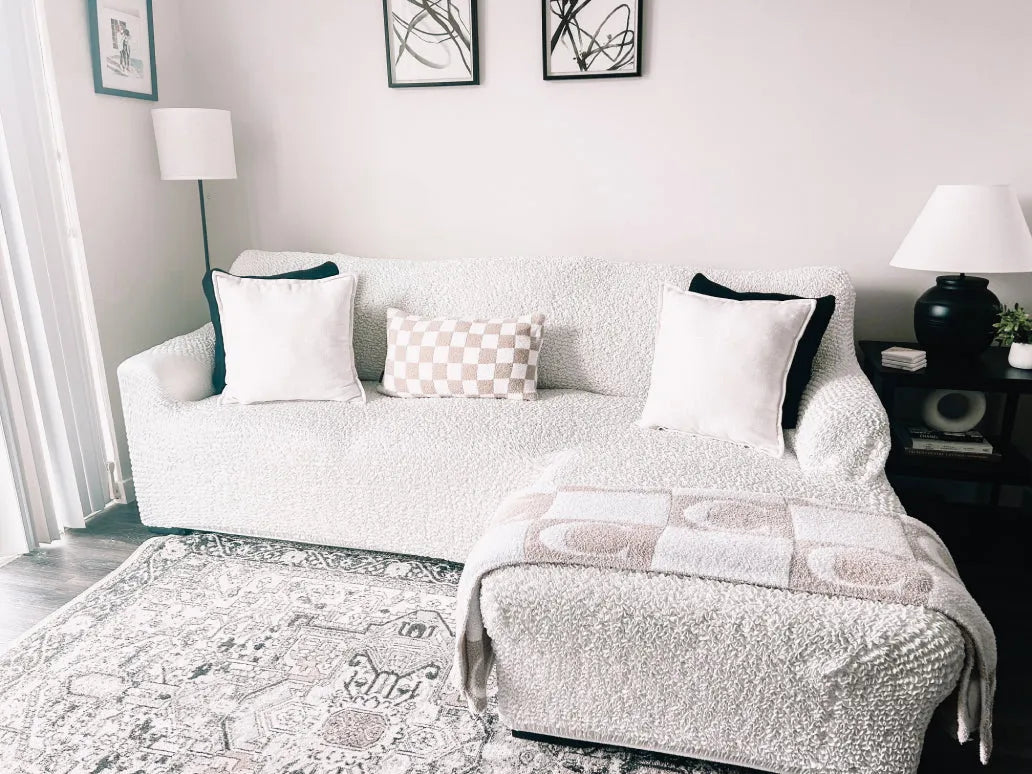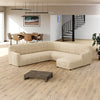What is Feng Shui?
Feng Shui represents an age-old Chinese discipline that orchestrates and stabilizes the energies within a living environment. This methodology, steeped in ancestral wisdom, elucidates how spatial configurations within our domiciles can profoundly affect our individual vitality, efficacy, and comprehensive contentment.
Creating Balance and Harmony in Small Spaces
Notably, within a feng shui for a studio apartment, the challenge and advantage reside in leveraging confined quarters to amplify beneficial energy currents.
The quintessence of Feng Shui in a constrained setting, such as a feng shui apartment, involves deliberately arranging items to foster an ambiance of openness and tranquility. By systematically organizing pivotal elements like a desk for working or a bed for repose, each zone is delineated yet cohesively enhances the collective environment.
The crucial aspect is to uphold distinct physical boundaries between divergent zones without clutter, facilitating an unimpeded energy flow throughout the abode.
Planning the layout and solutions for feng shui for a studio apartment transcends mere spatial optimization; it metamorphoses it into a haven of productivity and serenity, customized to bolster both work-from-home requisites and personal leisure.
The employment of versatile furnishings such as a desk that also serves as a dining surface exemplifies the Feng Shui tenet of dual utility, addressing diverse needs within the same area while preserving equilibrium and consonance.
Key Feng Shui Principles for Studio Layouts
Adopting Feng Shui in a feng shui studio apartment transcends mere visual refinement — it establishes a functional, equilibrium-rich environment conducive to well-being. This venerable Chinese methodology accentuates the significance of unobstructed energy circulation and spatial consonance, presenting unique challenges yet substantial rewards within the confines of compact residential settings such as studio apartments.
Articulating Distinct Zones in Limited Spaces
Central to this philosophy is the articulation of distinct zones within a limited area, crucial for segregating spaces dedicated to various functions such as slumber, labor, and everyday living, without resorting to obstructive physical partitions that could congest the area.
Applying feng shui in a studio apartment necessitates astutely delineating areas for different pursuits, ensuring each segment is tailored to its intended utility while promoting a cohesive energetic continuum. For example, positioning a bed in the secluded extremity opposite the entryway fosters a tranquil sanctuary, whereas situating a desk adjacent to a window exploits ample natural illumination for work-from-home endeavors.
The objective here is to sustain visible and energetic physical boundaries that distinctly isolate these segments of studio apartments to avert the confluence of disparate aspects of life, potentially engendering disorder.
Feng Shui for a One-Bedroom Apartment: Function Meets Aesthetics
The strategy is pivotal in Feng Shui one-bedroom apartment furnishing, extending beyond a simple aesthetic contribution. Each item should be arranged to support fluid movement and peak energy efficacy distribution. Such an arrangement invites an open, hospitable ambiance whilst facilitating the effective ingress and circulation of energetic potential.
Additionally, selecting multi-functional furniture pieces, like storage ottomans or convertible sofa beds, is essential to optimize utility in restricted environments without compromising elegance or comfort.
Color and Material Choices for Feng Shui Harmony
The selection of hue substances holds a critical function, profoundly impacting the ambiance and dynamism of an apartment. Subdued, earthy shades such as taupe, cerulean, or sage establish a serene, stabilizing area, conducive to rest and revitalization. In contrast, judiciously utilized vibrant hues serve as dynamic embellishments that inject vitality into the milieu.
The tactile caliber of surfaces is critical; organic substances like timber, flax, and cambric foster a sensation of coziness and warmth, resonating with the Feng Shui objective of crafting a congruous and hospitable domestic sphere. Materials should be natural and inviting, such as wooden furniture or soft loveseat covers and chair covers that invite you to relax and unwind.
Enhancing Space with Light and Reflective Elements
To amplify the vibrational quality of a feng shui one-bedroom apartment, the employment of reflective planes and methodical illumination is advocated. Reflectors positioned opposite fenestrations can magnify the luminosity within a chamber, augmenting the perception of spaciousness and openness. They also mirror the external landscape, thereby importing the external realm's vibrancy into the dwelling.
Illumination ought to be diverse and modifiable, encompassing ambient light for broad radiance, task lighting for precise undertakings such as perusing or culinary activities, and accent lighting to underscore architectural peculiarities or artistic pieces.
Integrating Nature with Botanical Elements
Integrating botanical elements stands as a fundamental tenet of feng shui for a studio apartment. Vegetation not only elevates aesthetic appeal whilst concurrently elevating atmospheric purity and channels crucial vitality. Opting for flora that demands minimal illumination and upkeep ensures their prosperity in confined areas, positively impacting the habitat's energy without imposing undue maintenance.
Adaptability and Fluidity in Feng Shui
Ultimately, the configuration should remain adaptable and fluid, accommodating alterations with ease to meet the evolving preferences of the studio apartment. This adaptability in feng shui for a studio apartment practice recognizes the transient nature of life, advocating for a habitation area that morphs in tandem with life's phases and desires.
Whether it involves repositioning furniture to cater to new pastimes or altering color schemes to reflect mood shifts, the layout should remain dynamic yet coherent, consistently mirroring the current phase and ambitions of its occupants.
Feng Shui for Enhancing Energy and Comfort
Reflective surfaces are fundamental in Feng Shu for a studio apartment, as they notably amplify the perceived expanse of an area, casting both synthetic and natural luminance to illuminate somber nooks and foster the semblance of depth and breadth. By tactically situating mirrors to channel augmented light into residential zones, not only is the area invigorated, but also the ambiance is enhanced.
For example, positioning a mirror across from a window in a studio apartment can introduce aspects of the external environment into the feng shui home, linking the indoors with nature and broadening your perspective beyond the tangible confines of your dwelling.
The Importance of Lighting and Natural Elements
Lighting equally holds a fundamental position in maintaining energetic equilibrium within a one-bedroom apartment. Optimal lighting arrangements can transform a room’s atmosphere, rendering it inviting and cozy. In Feng Shui, diversifying light sources is critical, encompassing ambient, task, and accent lighting to equilibrate the energy continuously throughout the day and evening.
Ambient lighting casts a soft glow across the room for general visibility, task lighting targets specific zones to augment their utility, and accent lighting emphasizes architectural peculiarities or pivotal décor elements, thereby enriching the apartments' complexity and allure.
Integrating elements such as natural stones and flora fosters a connection to the terrestrial, anchoring the ambiance and linking it with the natural realm. Gemstones like jade or amethyst, when positioned in locales where serenity and recuperation are sought (near a bed or atop a desk), are reputed to possess safeguarding attributes and help preserve a positive energetic environment within the home.
The Role of Plants in Feng Shui
Vegetation plays an indispensable role in Feng Shui, infusing vitality, hues, and a serene ambiance into a feng shui studio apartment layout. Beyond elevating the aesthetic charm of the one-bedroom studio apartment, flora significantly ameliorates air quality, a pivotal factor in fostering a salubrious living milieu.
This selection of appropriate vegetation is critical; it is advisable to choose species that demand minimal upkeep yet offer robust air-cleansing properties, such as sansevieria or spathiphyllum, which flourish under indoor lighting conditions.
Strategic Plant Placement for Spatial Harmony
To augment the spatial harmony and fluidity, meticulous consideration of plant positioning is recommended. For instance:
-
Vibrant, robust plants can be strategically placed in communal spaces to bolster social engagement and energy.
-
Gentler, blooming varieties are more suited for the sleeping quarters to cultivate a calming and restful atmosphere.
Crafting a Harmonious Feng Shui Layout
Within the principles of Feng Shui studio apartment layout, every stylistic decision deepens the connection between the surroundings and its inhabitants, forming areas that are aesthetically pleasing while being suffused with beneficial energies.
Whether it involves the calculated positioning of a computer within your study zone, the deliberate placement of family portraits to fortify familial bonds, or the incorporation of ritual components that cultivate peace, each nuance contributes significantly to the overall consonance of your dwelling.
The ultimate aim is to harmonize visual appeal with practicality, transforming your feng shui small apartment or studio from merely an abode into a haven for flourishing.
MORE INTERIOR DESIGN IDEAS AND INSIGHTS:


















